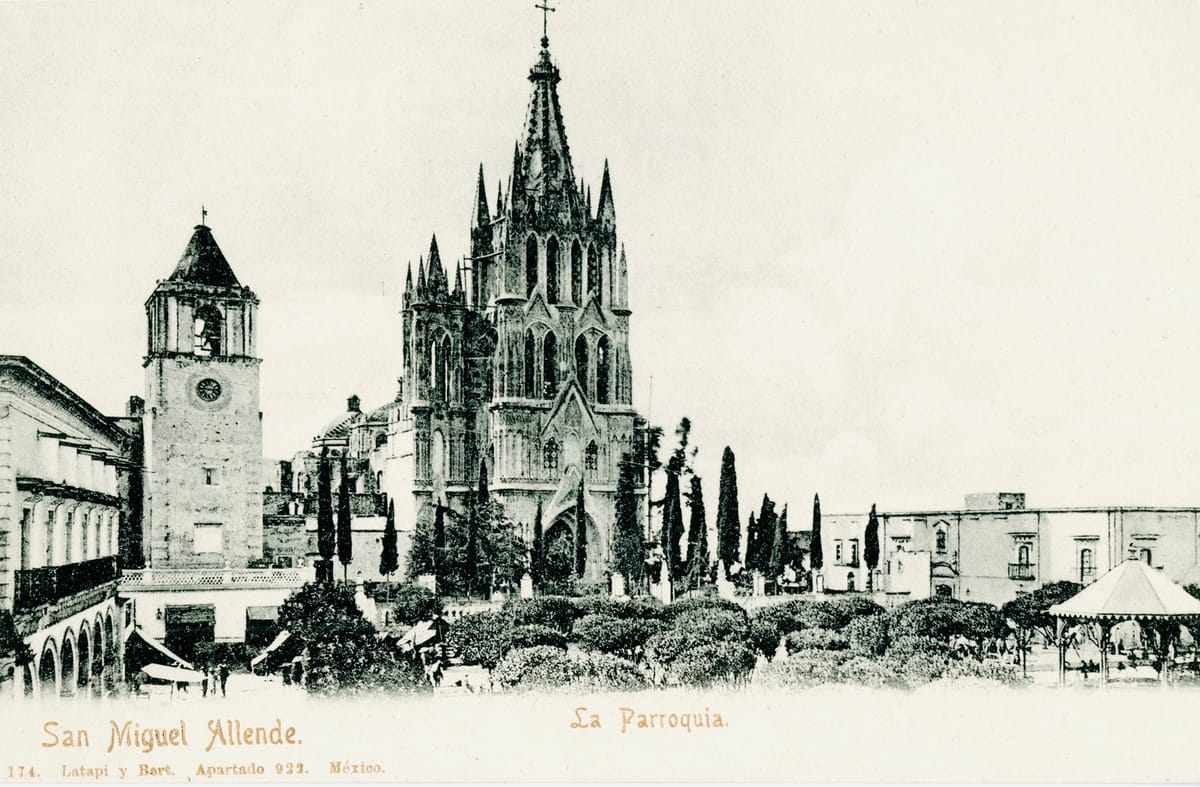History

Explore the rich history of San Miguel de Allende, from its origins as San Miguel el Grande to its UNESCO recognition. Learn about its independence, artistic legacy, and enduring charm.

Nestled in the heart of Mexico’s central highlands, San Miguel de Allende stands as a vibrant testament to the nation’s rich cultural tapestry. Situated in the state of Guanajuato, approximately 170 miles northwest of Mexico City, this enchanting city sits at an elevation of about 6,135 feet (1,870 meters) above sea level. Its temperate climate, characterized by mild temperatures and low humidity, has made it a haven for expatriates and artists from around the globe. The city’s population, a blend of locals and a significant expatriate community, contributes to its cosmopolitan yet distinctly Mexican ambiance.
San Miguel de Allende’s historical significance is deeply intertwined with Mexico’s fight for independence. Originally known as San Miguel el Grande, the city was founded in 1542 by the Franciscan monk Fray Juan de San Miguel. It became a crucial waypoint on the silver route between Zacatecas and Mexico City. It is notably the birthplace of Ignacio Allende, a prominent figure in the Mexican War of Independence. Allende, alongside Miguel Hidalgo and other insurgents, played a pivotal role in the early stages of the revolution, leading to the city’s renaming in his honor in 1826.
The mid-20th century brought a cultural renaissance to San Miguel de Allende, marked by both artistic innovation and entrepreneurial vision. In 1948, Gloria and Fortunato Maycotte opened San Miguel’s first hotel, Rancho Hotel El Atascadero. This pioneering establishment set the stage for the city’s evolution into a destination for travelers seeking charm, culture, and creativity. Around the same time, figures like Stirling Dickinson contributed to the city’s burgeoning art scene by helping to establish the Escuela de Bellas Artes, an art school that attracted artists and writers, including José Chávez Morado and David Alfaro Siqueiros, who taught painting at the school. The influx of creative minds transformed the city into a thriving artistic hub, a legacy that endures to this day.
Recognizing its well-preserved Baroque colonial architecture and historical significance, UNESCO designated San Miguel de Allende and the nearby Sanctuary of Jesús Nazareno de Atotonilco as World Heritage Sites in 2008. This honor underscores the city’s commitment to preserving its rich heritage, ensuring that its storied past remains an integral part of its vibrant present. The dedication to historical preservation has allowed San Miguel to retain its authenticity while embracing its role as a cultural beacon.
Today, San Miguel de Allende continues to enchant visitors with its cobblestone streets, colorful facades, and a palpable sense of history. The city’s unique blend of colonial charm, artistic flair, and cultural vibrancy creates an atmosphere that captivates all who wander its picturesque avenues. From its artistic legacy to its enduring historical spirit, San Miguel embodies a magic that continues to inspire residents and visitors alike.